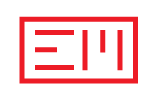
Everyone that has ever used a browser to access the Internet, knows what a link (more exactly a hiperlink) is:
A hyperlink points to a whole document or to a specific element within a document.
What not everyone knows is that there are different kind of links and there seems to be some confusion when it comes to define some of them. I want to list a few that I find important and give a short definition so that we all know what are we talking about.
Lets start:
- Outbound link (also known as hyperlink or link): Is, as the Merriam-Webster dictionary says: “an electronic link providing direct access from one distinctively marked place in a hypertext or hypermedia document to another in the same or a different document”. Or as we said earlier: “A hyperlink points to a whole document or to a specific element within a document.”
- Deep linking: Deep linking is making a hyperlink that points to a specific page or image on a website, instead of that website’s main or home page.
- Inbound link (also known as incoming links, backlinks, inlinks, and inward links) are incoming links to a website or web page. Inbound links are important for SEO (Search engine Optimization) because the number of inbound links is one indication of the popularity or importance of that website or page. Outside of SEO, the inbound links of a webpage may be of significant personal, cultural or marketing interest because it gives you key information to find out who is giving attention to your site.
- Broken link (also known as link rot, linkrot, dead link or dangling link):Is a link that points to a webpage or resource that is currently unavailable or out of date giving an error message on the users browser.
- Reciprocal links: Is a mutual link between two websites to ensure mutual traffic. This is important for important for SEO, as we have seen earlier because every inbound link adds relevance to your site. Search engines use link popularity algorithms in order to rank websites relevancy, this affects the order a website will show up after the user search for a specific term.
- Inline linking (also known as hotlinking, leeching, piggy-backing, direct linking, offsite image grabs) is the use of a linked object, often an image, from one domain A into a web page belonging to a second domain B. The domain B is said to have an inline link to the site where the object is located.
- Forum signature linking: Is a technique used to build inbound links to a website via using forum communities that allow outbound hyperlinks in a member’s signature. This can be a fast method to build up inbound links to a websiteas well as produce targeted traffic. It is important to know that forums using the nofollow attribute will have no actual SEO value.
- Resource Linking: They are hyperlinks to a website or a specific webpage that contains content that supports the statement that is made on that web page, or hiperliks to a quoted text. Lately, resource links have grown in importance because good links count towards a better ranking.
- Absolute Authority Links: Absolute authority links are, links that are coming from a domain that is a general authority. At Wiep they subdivide this into two categories. Informational authority links and Navigational authority links.
- Relative Authority Links: These are websites that are an authority in their specific area. Even thought they might have a relatively low traffic. If every website in your sector likes to them they are a very good target.
- Link checker: Is an online tool to evaluate the page you specify, extract the links from it and test the status of each one. If any errors are found these are reported.
- Link shortener: New media social media like Twitter or Facebook, made link shortener bloom. What these tools do is to shorten an otherwise very complex link into a simple one. A link that has 100 characters can be reduced to 15 characters in order to be tweetable (remember the 140 character limit). The advantage to this is that some of these services allows you to personalize the links, add multiple links into one single link or track the stats of the people that click in the link you created (this one is specially important for marketers). Some example are http://bit.ly/ http://tiny.cc/ http://fon.gs Some services like Pretty Link for WordPress allows you to creat short links with your domain name.
That was it for links. Hope you liked it.

Recent Comments